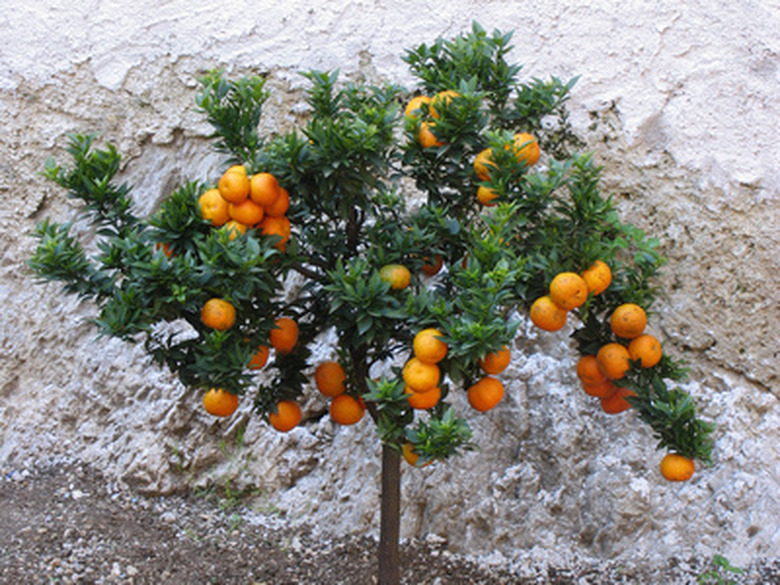How To Propagate From Tip Cuttings
Things Needed
- Pruning shears
- Peat moss
- Perlite
- Sand
- Pot
- Plastic bag
- Hormone rooting powder (optional)
- Bamboo stick
- Gloves
Asexual plant propagation, also called cloning, involves stimulating a section of a stem to form new roots. When propagating a plant from a tip cutting, take the tip section of a branch from a healthy, mature plant. Take the cutting during the growing season when the plant is producing abundant foliage. Plants that root readily from tip cuttings include citrus, croton, African violets and geraniums.
Step 1
Take tip cuttings from the end of a healthy branch that has a crown of leaves at the tip. Make a clean cut 4 to 6 inches below the tip of the branch, just below a leaf node. The leaf node is the place where a leaf bud forms and the leaf attaches to the stem.
- Asexual plant propagation, also called cloning, involves stimulating a section of a stem to form new roots.
- Take tip cuttings from the end of a healthy branch that has a crown of leaves at the tip.
Step 2
Pinch or clip off all the lower leaves as close to the stem as possible. Leave the three to five leaves at the top to allow the cutting to absorb moisture during the rooting process.
Step 3
Mix equal parts perlite and peat or coarse sand and peat to create a light sterile medium to root the cutting in. Avoid garden soil and compost–these mediums have microbes and bacteria that will cause the cutting to rot before rooting takes place.
Step 4
Mix the rooting medium with water until it is damp but still crumbly. Fill a 2-inch pot with the sterile, damp soil-less mixture.
Step 5
Roll the cut end of the tip cutting in hormone rooting powder. While not crucial, this step improves your chances of success, particularly with difficult plants.
- Pinch or clip off all the lower leaves as close to the stem as possible.
- Mix the rooting medium with water until it is damp but still crumbly.
Step 6
Place the cutting into the soil-less medium so that the bottom 2 inches are covered while the top 2 inches of the cutting, along with the remaining leaves, are exposed. Mist the leaves with clean, cool water.
Step 7
Drive a thin 8-inch tall bamboo stake into the rooting medium near the edge of the pot. Place a clear plastic bag upside down over the top of the pot so that it is held up and away from the cutting by the bamboo stake. Secure the bag around the lip of the pot to create a humid environment around the cutting.
Step 8
Place the pot in a warm area, away from direct sunlight. For most plants, a temperature range between 65 and 75 degrees F is ideal, but some plants require higher or lower temperatures to root successfully. In cold areas, place a heating mat under the pot so that the soil temperature remains consistent.
- Place the cutting into the soil-less medium so that the bottom 2 inches are covered while the top 2 inches of the cutting, along with the remaining leaves, are exposed.
- Place a clear plastic bag upside down over the top of the pot so that it is held up and away from the cutting by the bamboo stake.
Step 9
Take the bag off the pot every three or four days to check the moisture level in the pot. Mist the leaves and the soil-less mixture with water to keep the cutting damp. Most cuttings root in four to six weeks, but some varieties take more or less time. Give the cutting a very gentle tug every other week, when it feels firm in the soil, roots are forming.
Tip
See Resources for a list of plants that propagate well from tip cuttings.
Warning
Wear heavy gloves when working with plants that have thorns. Some plants have toxic elements in the leaves and stems, wear gloves and keep cuttings away from children and pets.
